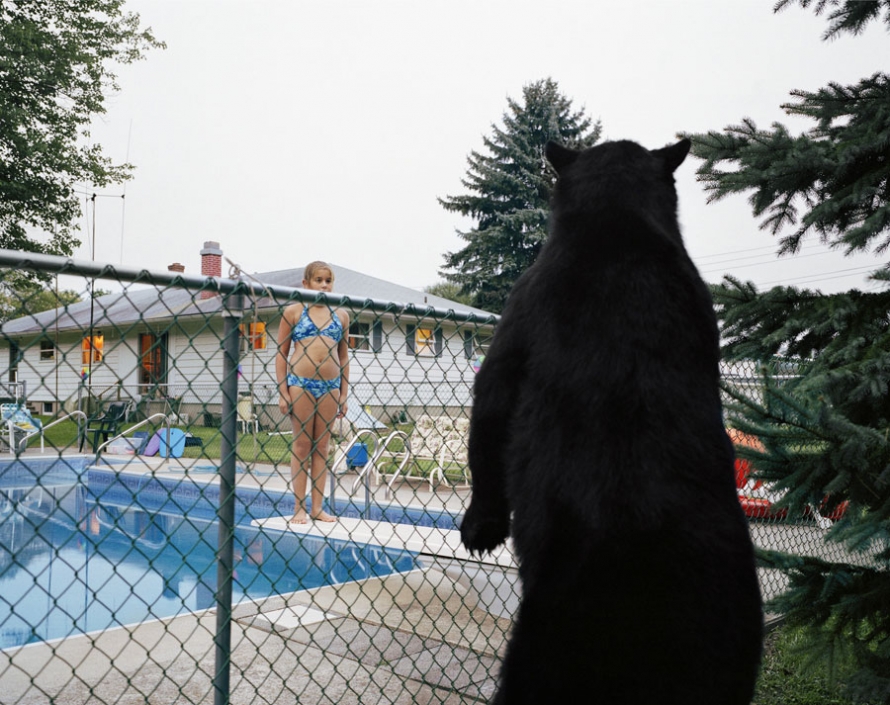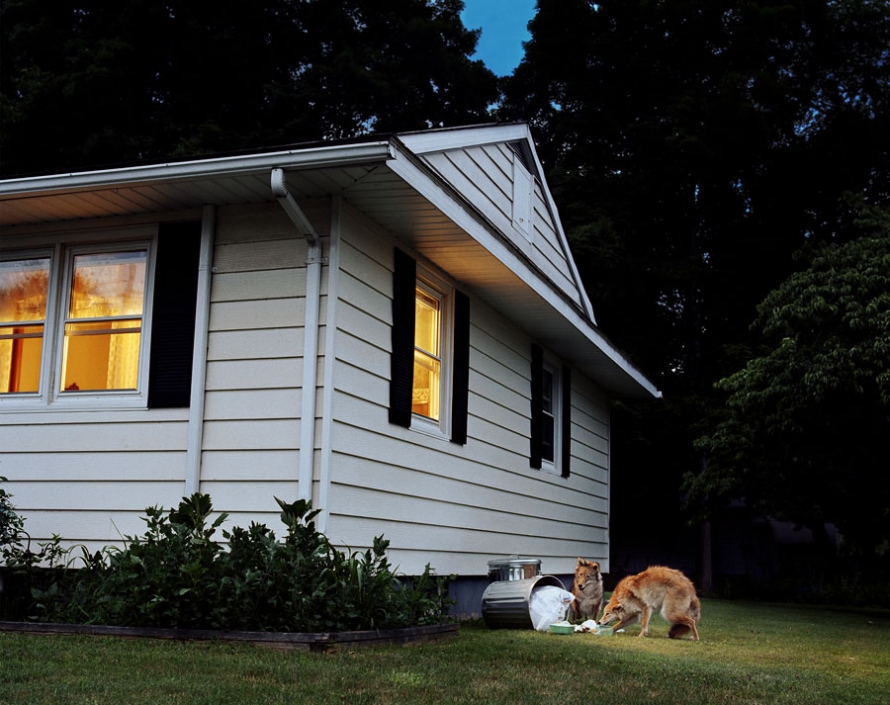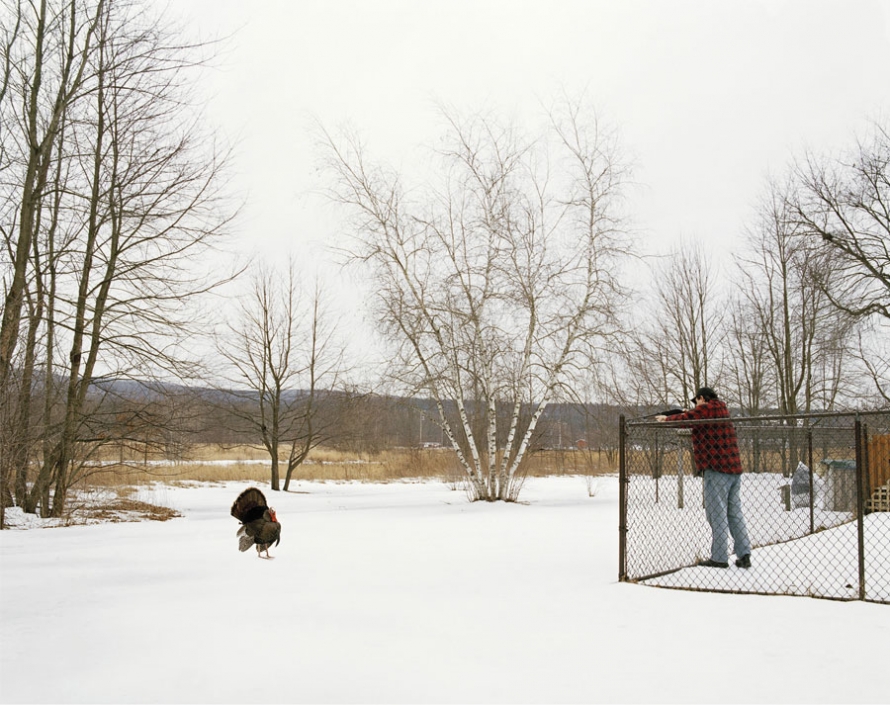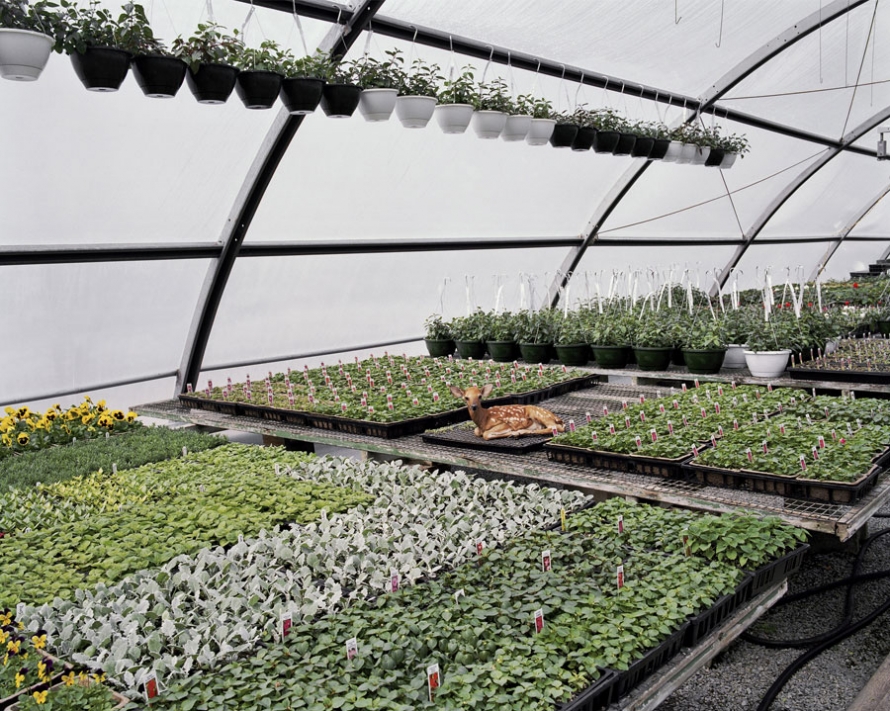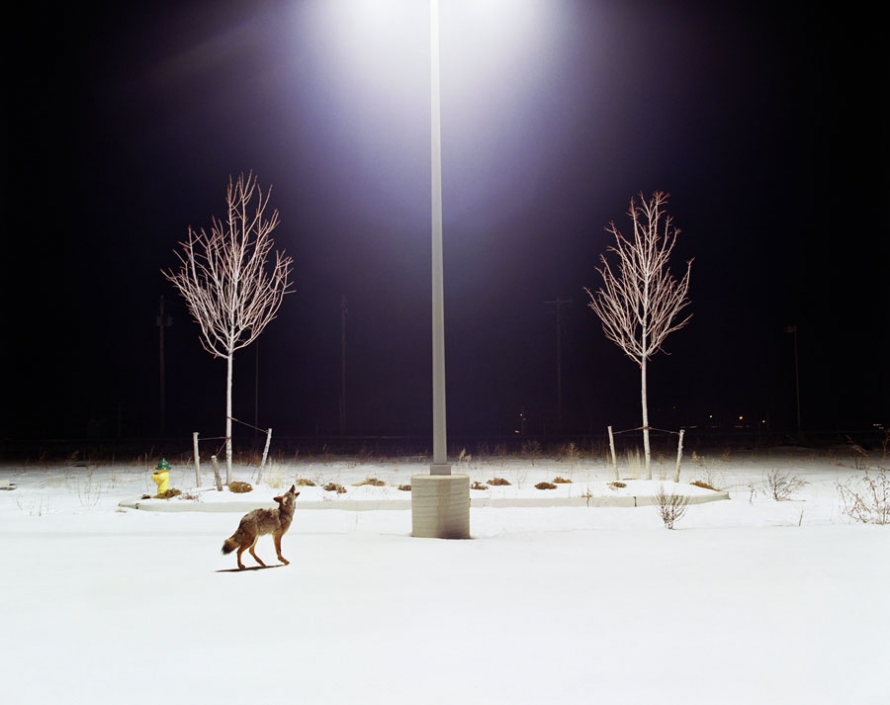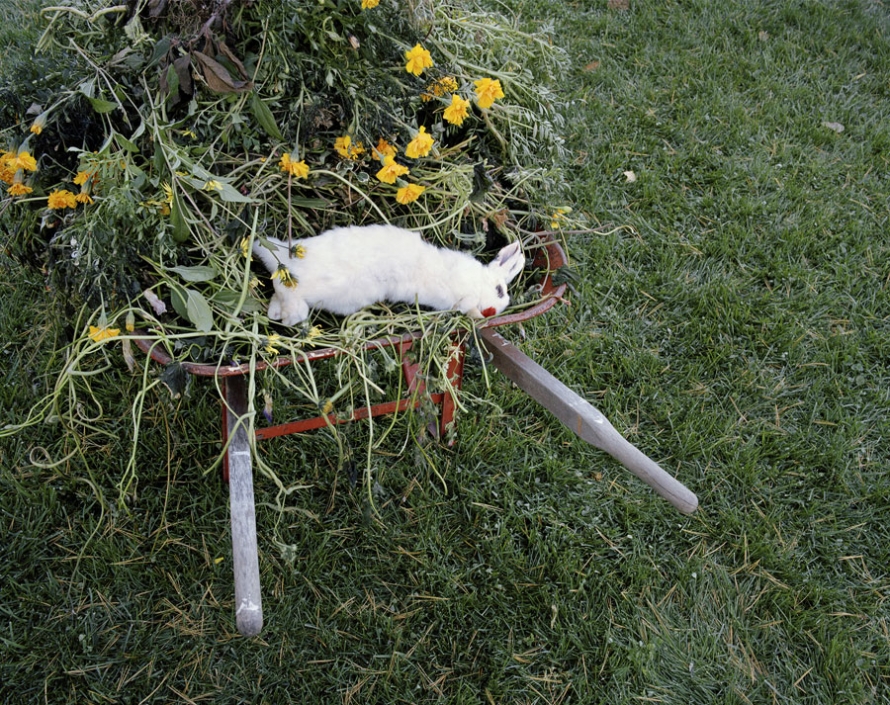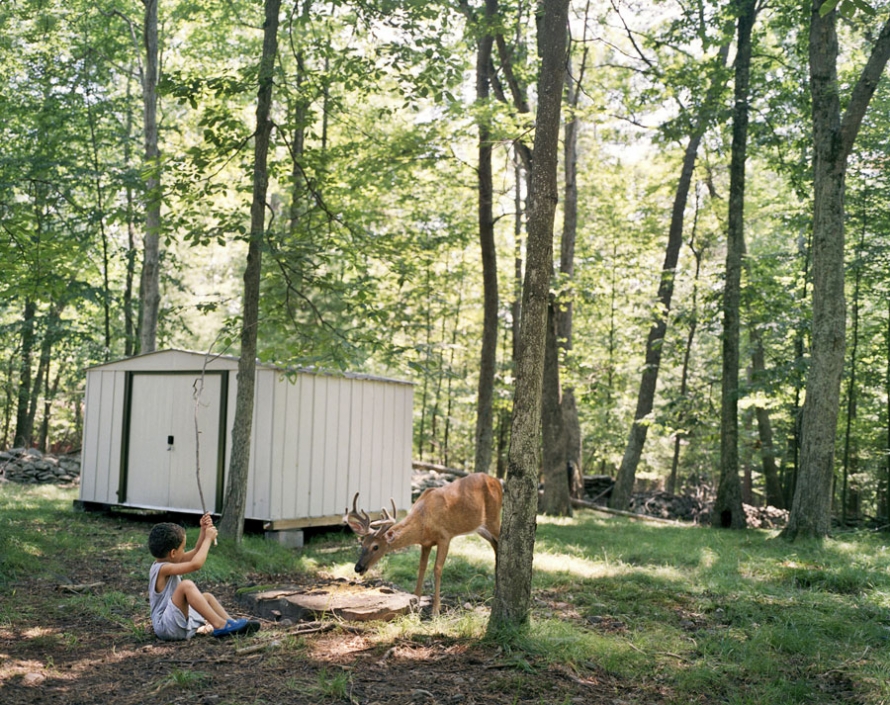Amy Stein’s photography features concepts on the surface that you can grasp right away and tensions underneath that take a second longer to emerge. In her most recent book of photographs, Domesticated, dioramas are constructed from real-life stories, taxidermy, and props, illustrating the clash of nature and humans in moments when it’s not always clear who’s in charge.
Amy Stein is a photographer and teacher based in New York City. She has been exhibited nationally and internationally and her work is featured in many private and public collections such as the Philadelphia Museum of Art, the Museum of Contemporary Photography, the Nevada Museum of Art, SMoCA, and the West Collection. Domesticated won the best book award at the 2008 New York Photo Festival. All images © copyright the artist, all rights reserved.
Did the Domesticated pictures begin as specific scenes or as hazier ideas?
All the images for Domesticated are based on real stories of human and animal encounters. Most of the stories came from conversations with the residents of Matamoras, Pa., where the series was shot. Some of the stories are pulled from local papers. The story was the genesis for each image and then inspiration kicked in as I tried to distill the personal tension of the encounter and the greater significance of the setting into a compelling narrative. Some of those tensions were immediate and emotional while others were more subtle and required a degree of inspired embellishment.
Did you ever create dioramas in school as a girl? What’s your reaction when you’re in the Museum of Natural History?
I did create dioramas in school and enjoyed them quite a bit. I had an unfair advantage over many of my classmates in diorama production because my mother was director of the photo library at the United States Information Agency (USIA). She had access to some of the great images of American history. I would give my mom a grocery list of images (one Abraham Lincoln, please!) and then cut those out to make my elaborate shoebox scenarios.
I love the Museum of Natural History. Their dioramas are beautiful works of art. The taxidermy and the scene paintings are gorgeous. I find them interesting as objects, but also what they say about our paternal desire to capture and contain the wild.
How did you come to choose Matamoras?
While shooting my “Women and Guns” series I became interested in hunting culture and wanted to explore those motivations and artifacts a little deeper. I started by visiting taxidermy schools and most of those happened to be in Pennsylvania. The schools lead me to working taxidermists, including Dave Clark in Matamoras. While I was in his shop the customers would come in and start to tell stories about animals they had encountered during hunts and in their backyard. As the project evolved from a straight exploration of taxidermy to something more complex, I kept finding myself coming back to Matamoras to hear more stories and shoot. I found that staying in a single town made the project and the work more intimate and more consistent.
There’s a theme in your work about being exposed to danger and examining how we protect ourselves. How wild is civilization for you?
I am interested in how we protect ourselves, but I’m more interested in how our defenses are often disconnected from the underlying causes of our problems. As advanced and refined as we humans like to think we are, our brain has remained remarkably the same for the past 150,000 years or so. While we have evolved our ability to hold and advance information at a rapid pace, we are at our core ruled by the same mammalian and reptilian impulses as our distant ancestors. I believe our modern consciousness is more about the pursuit of satisfaction than the pursuit of solution. This has lead us to champion diversions as our ultimate achievements and has complicated our ability to network with some of our more base impulses. The result of this conflict is that we refuse to internalize our actions and fail to account for them in similar situations in the future.
This is a long-winded way of saying we don’t learn from our mistakes. Human circumstance seems to play out like every episode of I Love Lucy. We create more peril with every advance and double-down on our ability hold harm at bay for another episode. For all of our modern trappings and wrappings we are still wild creatures at heart and it makes for absorbing art.
Are you a lover or a fighter?
Depends on who you ask. I do have a bit of a pugilistic streak in me, but mostly I want to spread the love.
What are you working on now?
I just finished shooting for my “Stranded” series and have begun the long process of editing towards a book. I also have two new series on deck. One series I hope to finish this year. The other, a companion series to Domesticated about migration, is pretty massive in scale and scope. I am going to spend 2009 applying for grants to secure funding for the project.
